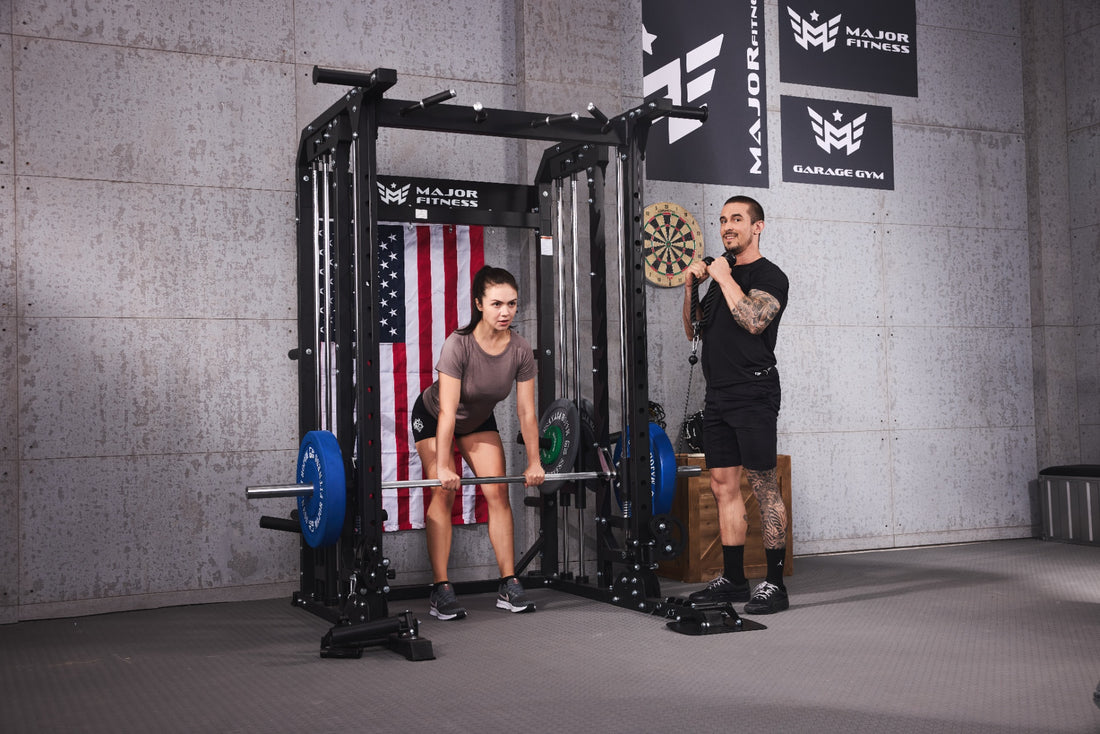
Are you looking to level up your deadlift game but find yourself confused between the Romanian Deadlift (RDL) and the Stiff Leg Deadlift (SLDL)? You're not alone. These two exercises are frequently mistaken for one another due to their similar mechanics, but they offer distinct benefits and target different muscle groups. Understanding the difference between RDL and stiff leg deadlift is crucial to optimizing your workout routine and avoiding injury. Dive in as we explore what sets these exercises apart and how to best incorporate them into your training program.
The Core Mechanics: RDL vs. Stiff Leg Deadlift
Let's start with understanding the mechanics of each exercise:
Romanian Deadlift (RDL)
The RDL focuses primarily on the hamstrings and glutes. It involves lowering the barbell while maintaining a slight bend in your knees. The key here is to push your hips back rather than bending your knees, which effectively targets the posterior chain.
- Starting Position: Stand with feet hip-width apart, holding the barbell with an overhand grip.
- Movement: Keeping your back straight and core engaged, lower the barbell by pushing your hips back. The knees should bend slightly.
- End Position: Lower the bar until you feel a stretch in your hamstrings and then return to the starting position.
Stiff Leg Deadlift (SLDL)
The SLDL also targets the hamstrings and glutes but places more emphasis on the lower back and the hip hinge movement. Your knees remain mostly straight throughout the movement.
- Starting Position: Stand with feet hip-width apart, holding the barbell with an overhand grip.
- Movement: Keeping your legs almost straight, lower the barbell by bending at your hips.
- End Position: Lower the bar until you feel a stretch in your hamstrings and lower back, then return to the starting position.
Targeted Muscles: Which Muscles Do They Work?
Both exercises primarily target the hamstrings and glutes but engage other muscles differently:
RDL
The RDL emphasizes the posterior chain, particularly the hamstrings and glutes. The slight knee bend and focus on pushing the hips back minimize lower back engagement, making it a safer option for those with lower back issues.
SLDL
The SLDL also targets the posterior chain but places more strain on the lower back due to the straight leg position. This makes it a less suitable option for individuals prone to lower back pain but beneficial for those looking to strengthen their lumbar region.
Benefits of Each Exercise
Both exercises offer unique benefits:
Benefits of RDL
- Posterior Chain Strength: Primarily targets hamstrings and glutes.
- Reduced Back Strain: Less strain on the lower back due to the slight knee bend.
- Improved Hip Hinge Mechanics: Helps improve form for other lifts like the conventional deadlift.
Benefits of SLDL
- Full Posterior Engagement: Targets hamstrings, glutes, and lower back.
- Increased Lumbar Strength: Strengthens the lower back, beneficial for those without prior lower back issues.
- Improved Flexibility: Enhances hamstring and lower back flexibility over time.

Common Mistakes to Avoid
Both exercises are effective, but only if performed correctly. Common mistakes include:
Mistakes in RDL:
- Rounding the back
- Not engaging the core
- Over-bending the knees
Mistakes in SLDL:
- Bending the legs too much or too little
- Not keeping the barbell close to the body
- Rounding the lower back
How to Incorporate Them into Your Routine
Incorporating these exercises into your training program can significantly enhance your strength and flexibility:
When to Use RDL
The RDL is excellent for warm-ups and lower body strength days. It prepares the posterior chain for heavy lifts and improves hip hinge mechanics.
When to Use SLDL
The SLDL is ideal for hypertrophy training and targeting the lower back. Incorporate it towards the middle or end of your workout routine to focus on hamstring and lower back development.
Safety Precautions
Safety is paramount when performing these exercises:
- Warm Up: Always start with a thorough warm-up to prepare the muscles.
- Monitor Form: Use a mirror or seek guidance to ensure proper form, especially for beginners.
- Progress Gradually: Increase weights incrementally to avoid overloading your muscles.
Ready to perfect your deadlift technique? Understanding the difference between RDL and stiff leg deadlift allows you to target specific muscles more effectively, optimize your workout routine, and reduce the risk of injury. Whether you're looking to strengthen your posterior chain or enhance flexibility, these exercises are essential additions to your fitness repertoire. Don't let confusion hold you back—grab that barbell, focus on form, and start reaping the benefits today!



















